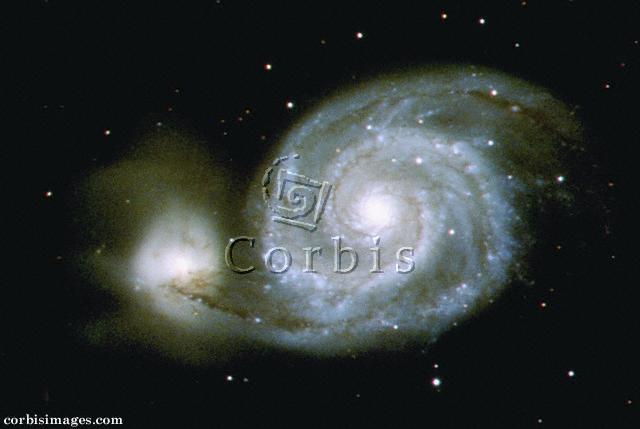
| 
| galaxy
large aggregation of gas, dust, and typically billions of stars. It is held together by the gravitational attraction between its parts, and its rotational motion prevents it from collapsing on itself. A typical spiral galaxy is shaped like a flat disk, about 100,000 light-years in diameter, with a central bulge, or nucleus, containing old stars; winding through the disk are the characteristic spiral arms of dust, gas, and young stars. An elliptical galaxy, lacking spiral arms entirely and containing little or no gas and dust, resembles the nucleus of a spiral galaxy. A small minority of galaxies are classified as irregular, i.e., showing no definite symmetry or nucleus. One theory suggests that irregulars evolve into spirals or ellipticals, depending on the initial amount of rotational motion. Some galaxies radiate a large fraction of their energy in forms other than visible light, such as radio waves, X rays, and infrared and ultraviolet radiation; their optical counterparts may be faint or undetectable. Gravitation also holds clusters of galaxies together; the Local Group cluster includes the MILKY WAY (containing the sun and solar system) and the ANDROMEDA GALAXY, both spirals, and the irregular MAGELLANIC CLOUDS.  | 
| 
|

